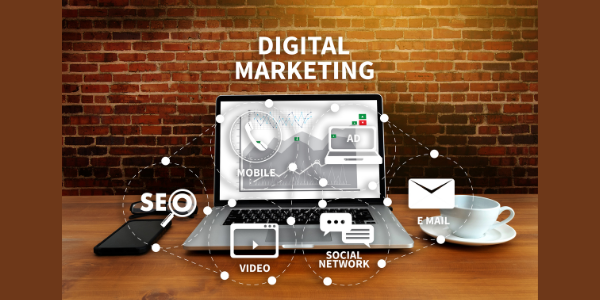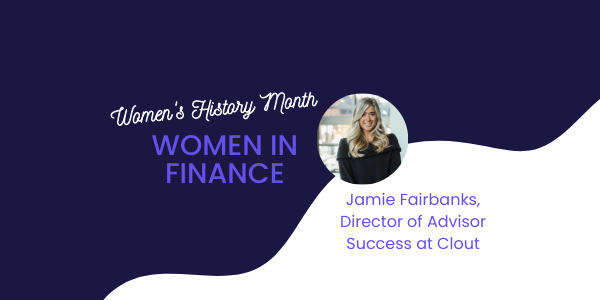Devising a digital marketing plan in advance can keep your budget on track and improve your results.
Below, we break down the steps you need as a financial advisor to come up with an effective online strategy.
Defining Your Target Audience as a Financial Advisor
Defining your target audience allows you to refine your message and decide the best ways to spend your time and marketing budget.
You can consider basic demographics such as age, race, sex, income, and education, but you can also group populations based on other factors, such as occupation, interests, or financial goals.
Some additional factors to consider when defining your target audience is how they may relate to your firm’s unique selling position (USP) and offerings, as well as your personal goals, skills, and background.
If you’re not sure how to define your target audience, you might find it helpful to examine the population segments your competitors are targeting, which we cover in the next section.
Conducting a Competitive Analysis as a Financial Advisor
When putting together your plan, it can be helpful to explore what your competitors are doing. Search financial advisors online and then visit their websites. Be sure to check out advisors in your local area, as well as ones in other regions or countries. Click through the website as if you were a customer. What do you like and what could they improve upon? Take notes of your observations.
You will also want to find firms and advisors on social media. What are they posting that’s eliciting likes and positive comments? Which profiles have the most followers?
The research you conduct on your competitors is meant to help you brainstorm so that you can create a strategy that sets you apart. You may also discover an underserved market and an opportunity for you and your firm.
Setting Digital Marketing Goals as a Financial Advisor
Setting goals will help you stay on track for your marketing plan. Any goals you set should be defined and measurable. You will want a nice mix of both short and long term goals. For example, you may want to set a specific number for AUM, which can be broken down into short term goals, such as X number of new clients a month.
You may also want to define less tangible goals, such as building brand awareness or being more well-known in your community. These can still be broken down into actionable and measurable goals. You can, for example, set a goal of posting three times a week on social media or participating in four community events a year.
Digital Marketing Budgets for Financial Advisors
Defining your budget in advance will prevent complications later on–such as overspending and then not having enough in your budget for later in the year.
When making your budget, you will also want to think of your budget in terms of your time. Marketing can be a time-consuming process, so knowing how much time you can allocate each day, week, and month is just as important as creating your financial budget.
Before setting up your budget, ask yourself the following questions:
- What is the total financial sum you can dedicate to your marketing efforts?
- What percentage of your total budget will be dedicated to each type of marketing method?
- What is the realistic ROI that you can anticipate from each of your marketing activities?
- How much time can you realistically dedicate each week to follow through with your marketing plan?
Planning each of these aspects in advance will help you execute your plan in a timely manner and stay on budget.
Clarifying Your Message as a Financial Advisor
No marketing plan would be complete without clarifying your overall brand’s message. A lot of larger brands create mission statements, and you might find it helpful to do the same. Your mission statement can include:
- Why your company exists
- The overall goals of your company
- The products and services your company offers
- Your target customers or market
General mission statements are a good start, but breaking them down into a more defined scope can help you stand out from your competitors. For example, a mission statement of “we help people” may be good, but overall it’s generic. Instead, you could be more specific by stating, “We help people reach financial security through custom planning based on real-time data” or something similar. The second statement is more detailed and, therefore, provides more direction.
If you work in a firm that’s not your own, you can still create a personal mission statement. These statements can help you decide how to personally approach new clients and prospects, and pave the way for you to stand out as a financial advisor.
Once you have a mission statement, you will then need to craft messages for each aspect of your digital plan. When putting them together, you will want to decide upon the theme of particular campaigns as well as the goal of each of them. The theme is the “vibe” or “feel” of the overall campaign–such as “relatable” or “informative.”
Themes should always be chosen with a specific target audience in mind, as well as the method of delivery. For example, a post on LinkedIn would ideally be more formal than one on Facebook because LinkedIn is geared towards professionals. Another example might be using less formal language in emails sent to the clients you know well versus the language used in a Google ad.
You should also adjust your theme based on the goal of a particular campaign. Some common goals of digital marketing campaigns are:
- Creating brand awareness
- Encouraging users to sign up for your newsletter
- Prompting visitors to call you for a consultation
- Growing your followers or subscribers
- Getting followers to interact with your posts
- Gaining new participants in your webinar
- Garnering referrals
Knowing your brand’s identity, the purpose of individual marketing campaigns, and whom you’re targeting with each of those campaigns can help you craft messages that resonate with your intended audience.
Finding the Digital Tools You Need as a Financial Advisor
A digital marketing plan can’t be implemented without the right tools. Here are some common apps and programs that you can use to help you with your digital marketing plan:
- Email marketing: MailChimp, Constant Contact, Drip, HubSpot
- Social media platforms: YouTube, Facebook, Instagram, Twitter, LinkedIn, TikTok, Pinterest
- Instant messaging apps: WhatsApp, Telegram, SnapChat, Facebook Messenger, WeChat
- Website Builders: GoDaddy, Wix, Squarespace, Duda, Webflow, Weebly, WordPress
- Graphic Design: Canva, Adobe Photoshop, Adobe Illustrator, Gimp
- Digital Calendars: Google Calendars, Calendly, Microsoft Outlook, Apple, Hubspot
- Online ads: Google, Microsoft, Facebook, LinkedIn, YouTube, Spotify
Related reading: Digital Marketing For Financial Advisors
Some Fintech solutions can save you the headache of searching for and setting up multiple platforms. Our platform can handle your email marketing and social media posts for you, saving your valuable time. TIFIN Content was created specifically for financial advisors. Click here to learn more.
Measuring Digital Marketing Results for Financial Advisors
To know if your strategy is working, you’ll need a way to measure your results. Tools used to handle email, social media, websites, and ads often come with some analytic capabilities. Here are some additional tools specifically built to handle analytics:
- Google Analytics
- Clicky
- Hotjar
- SimilarWeb
- Matomo
- Facebook Insights
You can also conduct A/B testing for different campaigns, which means you present the same population with two different messages and compare the results. You can use A/B testing with two different social media posts, ads, articles, and so on. This type of testing is great for providing insights as to which strategies truly resonate with your target audience. TIFIN Content offers A/B testing, as well as an automated workflow with real-time insights. Our social media and email marketing campaigns are customized to match your firm’s value proposition, client investments, and client segments.
To schedule a demo with us, click here.
Adjusting Your Digital Marketing Strategy as a Financial Advisor
Digital marketing strategies are meant to be adjusted. Your needs may change, and consumer trends and technologies most definitely will. The best way to stay current is to regularly monitor your campaigns and to periodically research the latest marketing trends and technology. When you understand that the strategies that work today may not be as effective in the future, your overall digital marketing plan becomes more effective.
TIFIN Content creates email and social media campaigns that are customized for your firm and target audience. We send timely, up-to-to date content to help keep you top-of-mind with clients. Contact us today to schedule your demo.
Important Reminder: If you are a regulated advisor, it is your firm’s responsibility to ensure all material is reviewed and given final approval by your internal compliance/legal department prior to publication.



